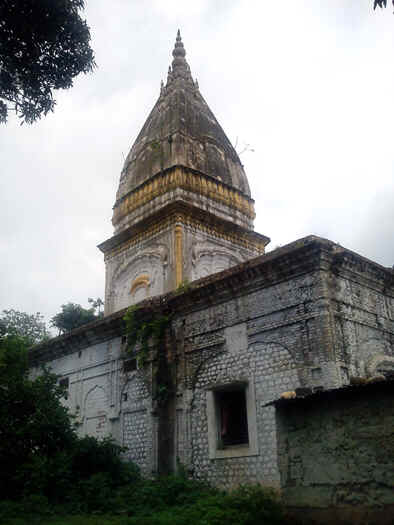Nagendra Singh Jamwal
The shrine of Sumah Devta near Akhnoor is one of the hidden pearls which dot the spiritual and cultural landscape of the Dogra Culture. Situated on the foothills of the lush green Shiwaliks in the village Sungal, the shrine is a classical tapovan-an abode of ethereal calm, natural beauty and spirituality. The shrine is about twelve kilometers from the ancient town of the Akhnoor. The crystal clear water of Sumah stream and presence of sacred groves ,mango orchards add to its holy and serene surroundings. No doubt it has attracted seekers of spirituality in the past as well as in the present times.
The place is home to number of natural caves interspersed in the foothills all along the stream. It is why such caves have been preferred abode of sages and ascetics. One of the caves called Pandav Gufa has its entrance covered with a fine brick structure. Some people ascribe these caves to be the creation of Pandavas who are believed to have spent their (Agyatvas) ie. period of total anonymity in Jammu region. The natural caves formed on the base of cliffs are covered by the thick vegetation of overhanging camel foot creepers enveloping the entrance of the natural caves in a green canopy thus shielding them from prying eyes of humans.
According to the local folklore Sumah Devta is worshipped as the Kuldevta of the Bral clan of Brahmins. According to the local legend a sage poured water from his kamandal at the spot to rid the place of water scarcity and this was how Sumah stream and adjoining Bowli (Natural Spring) came to have water throughout the year- a big boon for this kandi belt.
Recognizing the pristine beauty offered by the sacred place, the founder of the Dogra rule, Raja Gulab Singh built a magnificent temple dedicated to Shri Krishna and his consort Radha on a hillock overlooking the place. According to the priest of the temple, the construction was started around 1838 A.D. and the temple was ready by 1842 A.D. To express his deep reverence for the holy place and for the upkeep of the temple a land grant called Gair was sanctioned by the Raja .The temple affairs at present are managed by the Dharmarth trust. A old mango orchard exists in the vicinity of the temple even today. Interestingly the orchard is home to a healthy population of fruit bats which can be seen hanging upside down during the day time. The place also offers sanctuary to rock pigeons and other avians.
Another interesting feature of the temple is the existence of Frangipani tree (Plumeria) in the temple courtyard which according to Director Floriculture is probably more than a hundred year old. The Frangipani tree being a exotic species was introduced by the royal family in the state and was planted in the vicinity of royal buildings and parks. The temple also has remnants of a old Sarai.
The temple was vandalized in 1947 but was later restored. Unfotunately the restoration was done in a haphazard manner using cement and as a result the facade of temple structure is plain whereas the back of the temple still shows geometrical and floral motifs like inverted lotus etc. The place where temple is situated also affords a panoramic view of the adjoining hills, Sumah stream and Chenab River flowing at a great distance from this place.
Realizing the potential of this holy and picturesque place, plans are afoot to develop this ancient centre of pilgrimage without disturbing the natural beauty and sanctity of the place. The department of Tourism has chalked up an ambitious plan for realizing the untapped potential of religious tourism. The development plan includes construction of a rain shelter, tourist hut and a dormitory for pilgrims with all attendant facilities. The department of Floriculture has also decided to embark upon the task of developing a park and initiate landscaping in and around the temple, thus preserving the sensitive natural environment. In the later stage water body fed by the Sumah stream and a footbridge are going to enhance its beauty and accessibility. The development plan is being funded by the Union government.
With so much to offer the shrine beckons tourists both pilgrims and adventure seekers .Moreover the shrine is going to be a major attraction on the tourist circuit including Jammu, Akhnoor ,the shrine of Baba Mai Mal in Dori Dagher and Shiv Khori. Even if a fraction of tourists coming to Shri Mata Vaishno Devi shrine visit this sacred place it would certainly help in the economic upliftment of the people of this backward area. It is generally believed that the benefits of religious tourism percolate to the lowest levels of the local populace.The successful development of this shrine can set a benchmark for development of religious and eco tourism potential of shrines like Baba Bhed ,Dhansar Baba , Siarh Baba etc. located in different parts of Jammu region.
It can be safely surmised that more footfalls at this sacred shrine having enchanting natural beauty would give further publicity to one of the lesser known shrine revered by the Dogras.
(The author is a KAS Officer)


